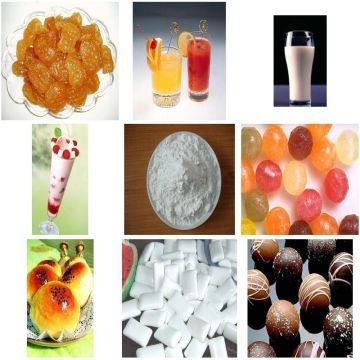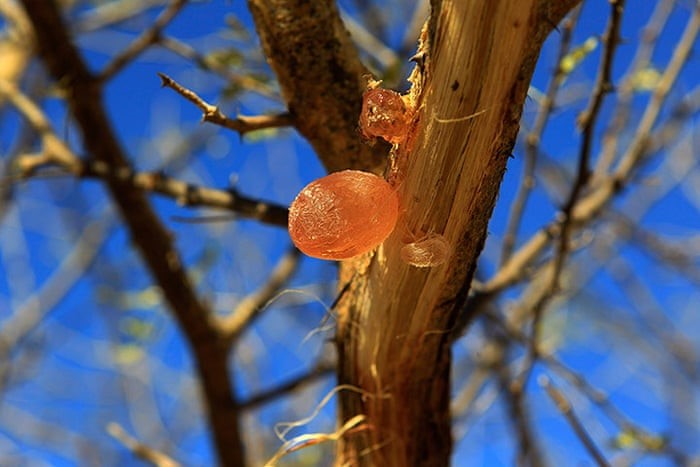Recently The U.S. Food and Drug Administration announced today that it intends to include “Acacia (Gum Arabic)” also known as gum acacia, be included as part of the FDA’s definition of dietary fibres. The action is being taken in response to a citizen petition from Nexira, Alland & Robert and Importers Service Corporation.
Definition of Dietary fibres according to US FDA
Dietary fibres that can be declared on the Nutrition and Supplement Facts labels include certain naturally occurring fibres that are “intrinsic and intact” in plants and added isolated or synthetic non-digestible soluble and insoluble carbohydrates that FDA has determined have beneficial physiological effects on human health. These effects include lowering blood glucose and cholesterol levels, reducing calorie intake, and increasing the frequency of bowel movements.
What is Gum Arabic and How is it produced?
Gum Arabic is the natural gum exuded by various species of Acacia. Gum Arabic (GA) is a complex polysaccharide, either neutral or slightly acidic, found as mixed calcium, magnesium, and potassium salt of a polysaccharidic acid. It is non-toxic, odourless, colourless, tasteless and the most widely used gum in the food and drug Industry. It is usually water-soluble, and it does not affect the odour, colour, or taste of the system in which it is used.
Gum Arabic is the main commercial gum exudate. About 85% of the world’s supply is produced in Sudan. This gum is mainly obtained from Acacia Senegal and some from the related species A. laeta, A. polyacantha and A. mellifera. Major producing countries in the world are Sudan, Nigeria, Chad, Tanzania, Kenya, etc
Family: It belongs to the family of Leguminosae.
Annual world production: 50,000 tons (approx.)
Production in India: 800 tons per annum (approx.)
Major producing Indian states: Rajasthan, Madhya Pradesh, Chhattisgarh, Gujarat, Punjab, Haryana

Harvesting & Collection of Gum
Method of harvesting/tapping: When acacia trees lose their leaves and become dormant at the beginning of the dry season, it’s time to start tapping. Superficial incisions are made on the bark, so the gum exudes out of the wound. It also depends on conditions such as heat, dryness, wounds, and disease.
Period of harvesting/collection: Collection of gum Arabic takes place at intervals during the dry season from November to May. During the rainy season, no gum is formed since the trees are in full bloom.
Yield: A tree production may range from a few grams to as high as 10 kg. The highest yields are observed on individuals aged from 7 to 12 years. In general, the higher the average temperature, the higher is the yield of gum. Damaged trees give a larger yield of gum. Gum yields are improved by natural factors that lessen the vitality of the trees such as hot weather, poor soil, lack of moisture, etc.
Processing
Gum is sorted in different grades based on colour and per cent of impurities. Sorted and cleaned gum Arabic is usually traded as tears that are approximately 2.5 to 5 cm in size packed in 100 kg jute bags.
Gum Arabic is further processed in the destination countries into forms needed for incorporation into the final products. These processes include ‘kibbling‘ (making uniform pebble size pieces), granulating, powdering and spray drying. Kibbling entails passing whole or large lumps of gum through a hammer mill and then screening it to produce smaller granules of more uniform size.

Industrial Applications
Some applications in the Food industry:
Confectioneries: In most confectionery products, Gum Arabic has two important functions. The most important function is to prevent crystallization of sugar, and thus gum Arabic finds its greatest application in confections where the sugar content is high and the moisture content low such as jujubes and pastilles. The second function is to act as an emulsifier to keep fat uniformly distributed throughout the product to prevent it from moving to the surface and forming an easily oxidisable, greasy film.
Dairy Products: It has been used as a stabilizer in frozen products, such as ice creams, ices, and sherbets because of its water-absorbing properties. The addition of gum Arabic prevents the formation of ice crystals by combining with large quantities of water and holding it as water of hydration, thus producing a Finer texture in ice cream. The chief objective of using this gum Arabic is that the ice cream does not melt readily.
Beverages: Gum Arabic is an effective foam stabilizer for beverages and is largely responsible for the “lace curtain” effect on the sides of beer glasses. Eye-appealing opacity in beverages and beverages dry mixes are produced by spray-dried combinations of vegetable oil and gum Arabic sold commercially as a clouding agent to give the effect of fruit juices.
Meat Products: In meat industry it is used in multiple ways
Meat emulsion: The succulence and yield of minced meat products can be improved by the inclusion of Gum Arabica; shrinkage during cooking is reduced.
Canned meat and fish: Where there is a need to reduce water activity or bind water, Gum Arabica can work effectively by reducing syneresis where meat or fish are surrounded by gelatin.







